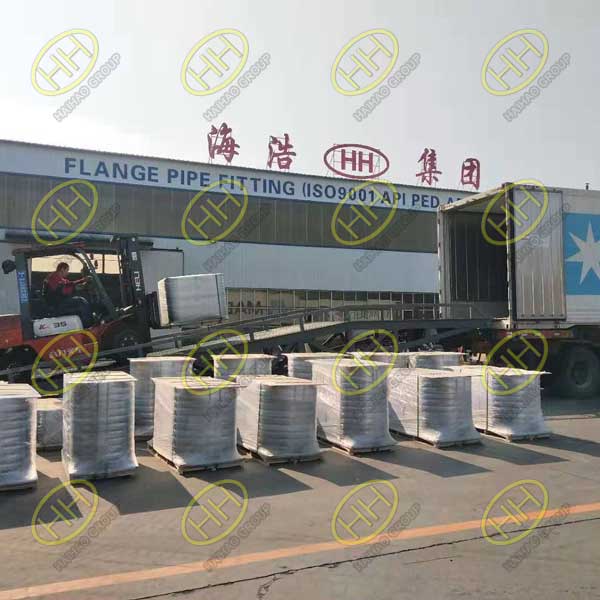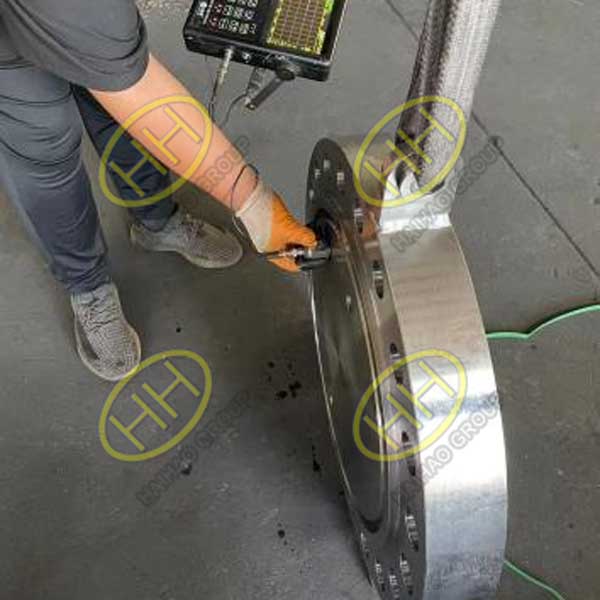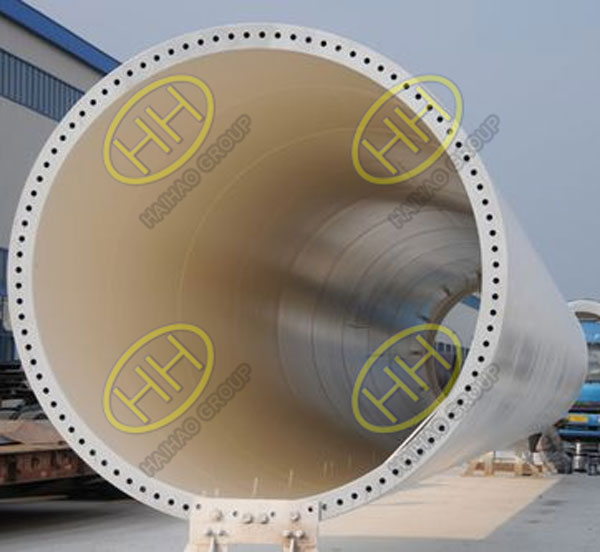Type testing project for pressure piping components – forged steel flanges
Forged steel flanges have higher accuracy and performance than cast flanges, and are widely used in the connection of equipment or pipelines in different industries, especially for high temperature and high pressure environments.

Shipment of flanges
Haihao Group as one of the earliest flange manufacturer,has strong experience in flange production and inspection and a complete set of equipments.We can produce all types of forged steel flanges, including weld neck flanges, slip on flanges, blind flanges, lap joint flanges, socket weld flanges, threaded flanges, plate flanges, long weld neck flanges, orifice flanges, spectacle blind flanges, anchor flanges, reducing flanges, tubesheet flanges and so on.
1.Technical Document Review
(1)Raw Material Quality Control: This involves reviewing manufacturing standards, acceptance criteria, and other quality control measures to ensure that the raw materials meet the required specifications.
(2)Process Documentation: Includes detailed procedures for forging, heat treatment, and machining processes to ensure consistency and compliance with industry standards.
(3)Inspection and Testing Procedures: These documents cover the methods for dimensional inspection, non-destructive testing (NDT), and physical and chemical testing to verify the integrity and performance of the forged flanges.

Ultrasonic testing of flange
2.Inspection and Testing
(1)Identification: Proper marking and traceability of each flange to ensure compliance with documentation and quality standards.
(2)Visual Inspection and Surface Finish: Examination of the flange’s appearance and the roughness of the sealing surfaces to meet the required specifications.
(3)Dimensional Inspection and Geometric Tolerances: Measurement of the flange dimensions and assessment of geometric tolerances to ensure they fall within acceptable limits.
(4)Hardness Testing (where applicable): Checking the material hardness to confirm it meets the specified requirements.
(5)Chemical Composition: Analysis of the chemical composition to ensure the material meets the required standards.
(6)Tensile Properties: Testing the tensile strength to ensure the flange can withstand the operational pressures.
(7)Impact Testing (where applicable): Conducting impact tests, particularly for materials that will operate in low-temperature environments.
(8)Non-Destructive Testing: Performing NDT to detect any internal flaws or defects that could compromise the flange’s integrity.
(9)Metallographic Examination (where applicable): Analyzing the microstructure of the material to verify proper grain structure and detect any anomalies.

Wind power flange
3.Sampling Rules
For each inspection and testing item, two samples are randomly selected from products with the same design method, material grade, manufacturing process, and specifications for type testing. The sampling base should generally consist of at least five pieces, except for pressure piping components with high manufacturing costs and unique structures or materials that do not allow for mass production. For products with a nominal diameter (DN) of ≥400mm, the sampling base for each batch should be no less than three pieces.
4.Coverage Scope
Material Coverage:
Materials are divided into six groups: I, II, III, IV, V, and VI. Higher group materials can cover lower group materials as follows:
Group I: Carbon steel and low alloy steel with a standard minimum tensile strength of ≤540 MPa.
Group II: Chromium-molybdenum steel.
Group III: Alloy steel with a standard minimum tensile strength of >540 MPa (excluding Groups IV, V, VI).
Group IV: Alloy steel designed for temperatures below -40°C (excluding Groups V, VI).
Group V: Stainless steel (excluding Group VI).
Group VI: Duplex stainless steel.
Group I-III materials: Higher group materials can cover lower group materials.
Group IV materials can cover Group I materials.
Group VI materials can cover Group V materials.
Materials from other groups cannot be interchanged for coverage.
Forging Class Coverage:
According to NB/T47008 “Forgings of Carbon Steel and Alloy Steel for Pressure Equipment,” forging classes are divided based on design requirements, operational characteristics, application, testing items, inspection quantities, and complexity. Higher class forgings can cover lower class forgings.

